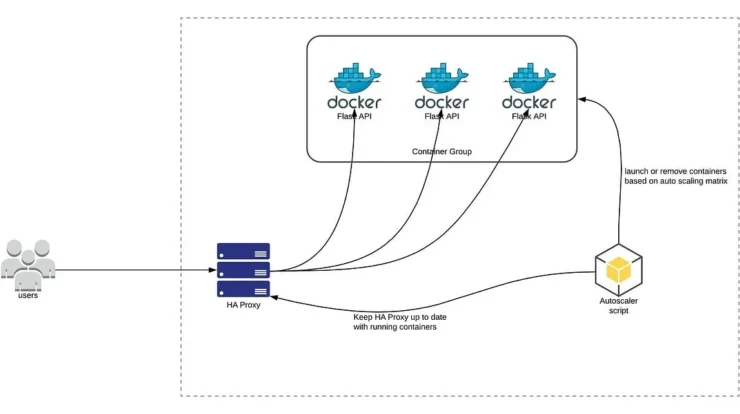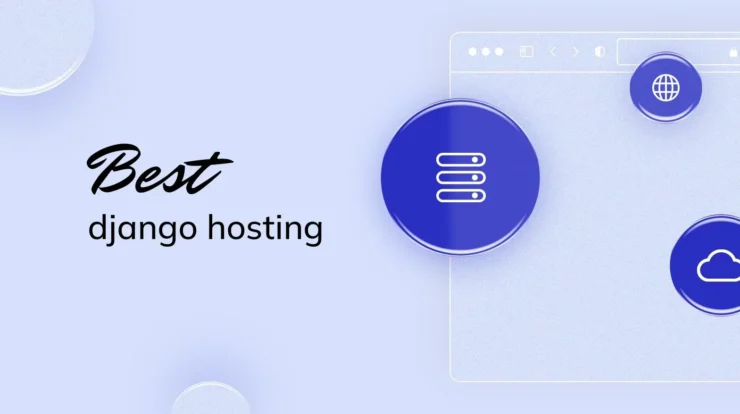
Modern web applications, particularly those built with the efficiency and scalability of Go (Golang), require robust and reliable hosting to deliver optimal performance and user experience.
Choosing the right hosting provider is crucial for the success of any Go application, impacting everything from application uptime to cost-effectiveness.
Selecting the best hosting for Golang applications involves careful consideration of factors such as server resources, security measures, and support infrastructure.
A poorly chosen hosting environment can lead to performance bottlenecks, security vulnerabilities, and ultimately, a diminished user experience, impacting the application’s overall functionality and longevity.
This comprehensive guide delves into the intricacies of selecting the ideal hosting platform for your Golang-based projects, empowering you with the knowledge to make informed decisions.
Factors like CPU cycles, memory allocation, and network bandwidth can significantly influence the performance and responsiveness of your Golang application hosted on a specific platform.
From cloud-based solutions to dedicated servers, the landscape of hosting options for Golang applications offers a range of choices with varying pricing and support packages.
Understanding these nuances and prioritizing features like automatic scaling, proactive security measures, and reliable uptime guarantees will ultimately determine the optimal hosting solution for your unique Golang application’s needs, enabling seamless scaling and high availability.
This article examines the key aspects to consider when evaluating the best hosting for Golang applications, ensuring developers can make the most effective choices to optimize their projects.
Understanding Server Resource Requirements for Golang Applications
Selecting the ideal hosting provider for Go (Golang) applications hinges significantly on comprehending the specific server resource needs of these applications. This crucial factor directly impacts the performance and reliability of the application. Server resources, including processing power, memory, and storage, must adequately accommodate the demands of the Golang application.
A robust hosting environment tailored for Golang applications should offer sufficient CPU cores to handle concurrent requests efficiently. This is especially important for applications expecting high traffic volumes or complex computations. Adequate RAM is critical for loading and processing data, ensuring smooth operation and preventing performance bottlenecks.
Golang’s efficiency often translates to high application throughput with minimal resource consumption. However, even optimized Golang applications demand sufficient storage space to accommodate code, data, and application files. Choosing a hosting provider with scalable storage solutions is essential for long-term growth and to handle evolving application needs.
Server responsiveness to traffic surges is paramount for delivering a seamless user experience. A hosting platform optimized for Golang should offer quick response times and the ability to dynamically allocate resources during peak usage periods. This adaptability is key to maintaining performance under load.
The hosting provider’s infrastructure plays a crucial role in the uptime and overall stability of Golang applications. A reliable hosting infrastructure with robust redundancy and failover mechanisms ensures uninterrupted service for users. A stable environment is essential for avoiding service disruptions and maintaining application availability.
Ultimately, the appropriate selection of server resources within the hosting environment forms a foundational element for the success of Golang applications. Careful consideration of these resources ensures optimal performance and scalability, leading to a positive user experience and a more cost-effective solution for the application’s long-term viability.
Understanding Server Resource Requirements for Golang Applications
Selecting the optimal hosting provider for Go (Golang) applications demands a thorough understanding of the application’s server resource needs.
Server resources, including CPU, RAM, and storage, directly influence the performance and reliability of Golang applications.
An inadequate hosting environment can lead to performance bottlenecks, impacting application response times, and ultimately affecting the user experience.
High-traffic Golang applications, or those performing complex computations, require significant processing power. Sufficient CPU cores are essential for efficient handling of concurrent requests.
Adequate RAM is equally vital for storing application data, handling user requests, and preventing performance degradation. Golang’s efficient nature doesn’t eliminate the need for sufficient RAM for optimal throughput.
Choosing a hosting provider that offers scalable server resources is critical for accommodating future growth. A provider’s ability to dynamically adjust resources as demands increase is a crucial aspect of reliable hosting for Golang applications.
Considerations also extend to storage capacity. Sufficient storage space is required to store application data, configuration files, and potentially large datasets used by the application.
Golang applications, although often praised for their performance, still require suitable server resources to function smoothly. This means understanding the expected workload and corresponding resource consumption is paramount when evaluating potential hosting providers.
The hosting environment must support the potential growth of the Golang application. A provider’s capacity to scale resources in response to increased demands or traffic spikes is vital. This scalability prevents bottlenecks that could disrupt the application’s performance.
Performance monitoring tools integrated into the hosting platform help track resource usage and identify potential bottlenecks. This proactive monitoring provides insight into resource utilization, enabling timely adjustments to maintain optimal application performance.
Careful evaluation of potential hosting providers should include a detailed review of their resource allocation policies. Transparent pricing models based on resource consumption foster cost-effectiveness and predictability.
Understanding the balance between resource needs and the cost structure offered by different hosting providers is critical in selecting the best option for Golang applications.
A suitable hosting environment, one that consistently delivers sufficient server resources, is fundamental for the smooth operation and long-term success of Go (Golang) applications.
Performance Optimization for Golang Applications on Hosting
Performance is paramount when choosing a hosting provider for Golang applications, as rapid response times and efficient resource utilization directly impact user experience and application scalability.
A hosting provider’s infrastructure plays a crucial role in determining the speed and responsiveness of a Golang application. Factors like server hardware specifications, network connectivity, and server location all impact performance.
The optimal hosting solution for Golang applications prioritizes low latency, high throughput, and dependable uptime. This ensures that requests are processed quickly, leading to minimal delays for users.
A hosting provider with robust hardware configurations, such as powerful CPUs and ample RAM, is essential for handling concurrent requests and avoiding performance bottlenecks that are common when running high-traffic Golang applications. This is particularly important for applications that are computationally intensive or have many concurrent users.
In addition to server-side performance considerations, network infrastructure is equally vital. A hosting provider with a global network infrastructure ensures that users worldwide can access the application with minimal latency. Choosing a hosting provider with optimized network connections is crucial for maintaining fast response times regardless of the user’s geographical location.
Furthermore, the hosting provider should offer robust monitoring and logging tools. These tools allow developers to track application performance metrics, identify bottlenecks, and troubleshoot issues effectively. Properly monitoring and analyzing these metrics enables efficient optimization strategies and timely intervention in case of performance degradation.
Utilizing a hosting platform designed specifically for Golang applications can further enhance performance. Such hosting often includes optimized configurations that align well with the Golang runtime, further improving application speed. Specifically tailored hosting environments for Golang often integrate pre-configured load balancers and caching mechanisms designed to enhance application responsiveness for handling peak traffic demand. These features are crucial for the optimal performance of Golang applications.
Finally, evaluating the hosting provider’s support infrastructure, including the availability of dedicated support staff and readily accessible documentation, is essential. Rapid responses to issues and access to comprehensive information are critical for maintaining the application’s performance in the long run.
A hosting solution that excels in these performance-related aspects is vital for maximizing the efficiency of any Golang application. Careful consideration of these factors will be a key element in choosing the best hosting for Golang applications.
Scalability and Performance for Golang Applications
Scalability is a crucial consideration when choosing a hosting solution for Golang applications, especially as your application’s user base grows and demands increase.
A robust hosting provider must offer flexible scaling options to accommodate fluctuating traffic patterns without performance degradation. This ensures your application remains responsive and accessible to all users during peak periods.
Golang’s concurrency capabilities, often leveraged for building high-performance applications, need to be supported by hosting platforms that can dynamically adjust resources—CPU, memory, and network bandwidth—to match the demands of your application.
Effective scaling strategies for Golang applications on a hosting platform involve understanding how the application will respond to various load scenarios. This predictive analysis allows hosting providers to proactively allocate resources, preventing bottlenecks and maintaining optimal performance.
A good Golang hosting platform will offer various deployment options, from simple scaling to more complex containerized environments such as Docker or Kubernetes. These solutions are essential for deploying and managing applications effectively, ensuring they continue to perform at their best even when the load changes dramatically.
Furthermore, the infrastructure underlying the hosting provider significantly impacts scalability and performance. This involves considering factors such as network latency, data center location, and the overall reliability of the hosting platform’s architecture. A high-performing Golang hosting platform will ensure quick response times, minimize latency, and maintain uptime for your application, crucial for maintaining a positive user experience.
Ultimately, the ideal hosting provider for Golang applications will equip you with the tools and infrastructure to handle growing traffic loads and maintain performance at scale, ensuring your application’s availability and responsiveness.
Choosing the right hosting solution is paramount for Go (Golang) applications, directly impacting performance, scalability, and overall user experience.
We’ve explored various hosting options, highlighting the importance of factors like server resources (CPU, RAM, storage), network performance, and scalability features.
The selection of the best hosting for Golang applications depends heavily on the specific needs of your project – from individual microservices to complex, large-scale web applications. A robust hosting environment is critical for maintaining application speed, responsiveness, and stability.
Ultimately, the optimal hosting for Golang applications balances cost-effectiveness with the ability to handle fluctuating traffic and evolving project requirements. Finding the right balance ensures consistent performance and reliability, enabling your application to thrive.
In conclusion, understanding the nuances of different hosting providers and aligning them with your Golang application’s specific demands is crucial for success. The best hosting for Golang applications offers optimized environments designed to handle the unique characteristics of Go applications, ensuring smooth operation and superior performance. Your chosen platform should not only support your application’s current needs but also be easily scalable as your project evolves. Selecting the best hosting for Golang applications is not just a technical decision; it’s a strategic one that will impact the overall functionality, reliability, and growth trajectory of your application.






